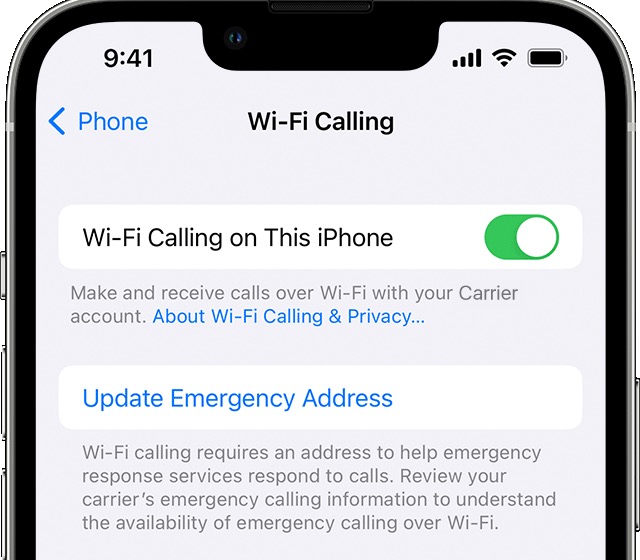What are the top ways for making calls without using a SIM card? Find out all your options!
SIM cards are a key part of your cell phone, and most people find that they can’t make calls without one. Your SIM contains your personal number and a lot of your other cell phone-related information. It tells you who the carrier is, the country code of origin, and a user ID that is unique to you. Without a SIM card, you may find that making calls isn’t possible.
However, you may not always want to use a SIM card to make a call – you may have lost your card, you might have damaged it, or you may not want to use your number for the call. You might also have no signal on your cell phone.
In this article, we’re going to find out, if can you call without a SIM card, and if so, how? Some of the top options include things like WiFi calling, using VoIP, and using a messaging app – so let’s find out more about these.
WiFi Calling


What Is Wi-Fi Calling?
WiFi calling is probably one of your best options if you are looking for a way to make a call without a SIM card, although it does require a bit of setup. It can only be used if you have access to a Wi-Fi network.
Wi-Fi calling uses a built-in feature on most smartphones (although not all) and it will allow you to make the call using the Wi-Fi network instead of using your cell carrier’s coverage. You may have to pay an access fee for this in some cases, so it’s important to check in advance. For some people, this is included in their cell phone package.
You will need to contact your provider if you want specific instructions on how to set up the Wi-Fi calling feature on your phone, but in most cases, the process will involve the following steps:
- Check that you are connected to a viable Wi-Fi connection
- Activate the HD Voice function (you may be able to find this under Advanced Voice Settings for older smartphones; most modern smartphones have it automatically activated)
- Accept the Terms; Conditions for Wi-Fi calling when this box appears on your phone
- Check and confirm that the US address entered is correct, or update it if it is not correct
You may also need to check whether you have the setting “Wi-Fi calling” enabled on your phone. You should also make sure that your data is turned off, as you won’t be using this for the call.
If you are not able to access Wi-Fi calling using these steps, try researching a guide for your specific model, or contact your cell carrier for further information.
What Are The Benefits Of Wi-Fi Calling?
Wi-Fi calling is a great option if you are going to be somewhere with limited or no reception because it lets you take a Wi-Fi network’s signal instead of looking for your phone carrier’s signal. This allows you more flexibility about where you call from.
It’s great as a backup option for companies when servers go down, too, and it may help you save your data. In some cases, it will be cheaper or possibly even free, making international phone calls a better option (if they are available).
There are lots of instances in which both individuals and workplaces can benefit from it.
What Are The Drawbacks Of Wi-Fi Calling?
One of the biggest drawbacks is that you do need a reliable Wi-Fi network and you may not have sufficient speed, especially if you are trying to do this in a public place where lots of other people are also using the network.
Furthermore, in most cases, you can’t use this feature when abroad; most cell phone suppliers restrict it to US phone calls only. Some will also prevent you from calling internationally, although this depends on your carrier.
You also can’t move away from the Wi-Fi network. Some cell phones do automatically switch to using your cellular connection if you get out of range of the Wi-Fi, but not all do. If you want to learn more about this, get in touch with your provider.
Which Devices And Carriers Allow Wi-Fi Calling?
Most modern devices allow Wi-Fi calling, and all major US carriers do. That includes Verizon, Sprint, AT&T, and T-Mobile. If you have an old smartphone, you may not enjoy this feature but check with your company before you dismiss it as an option.
VoIP (Voice Over Internet Protocol)


What Is VoIP?
VoIP is a phone system that uses an internet connection for making and receiving calls. It depends upon having high-speed internet and a VoIP service provider, who handles the calls. You can use VoIP to turn almost any mobile device into a phone.
Popular VoIP Apps And Services
There are lots of great VoIP apps and services, but some of the most popular include:
- Facebook Messenger
- Google Hangouts
- Skype
- Viber
- MagicApp
- Google Duo
Remember that some of these have an associated cost, while others are free, so make sure you choose a service that is right for you.
How To Use VoIP For Making Calls
The first step to using a VoIP service is to work out which one best suits your needs. If the person you are trying to contact uses Google Duo, you will not be able to call them using Skype. Once you have determined the best service for you, you’ll need to download it, make an account, and then sign in.
From there, you can enter the contact information of the individuals you are attempting to reach and set up a call.
What Are The Benefits Of Using VoIP?
A VoIP can save you money over traditional calling, as many of these services are free. It’s frequently more accessible, more portable, and easier to bring large teams onto a single call. It’s a lot more scalable than traditional calling via cell phone.
What Are The Drawbacks Of Using VoIP?
There aren’t many drawbacks associated with using VoIP, but you must have a reliable internet connection available. You may also experience some latency if the internet connection is unstable, and there’s no location tracking for emergency calls.
What Do You Need For VoIP?
It can vary, but many providers recommend a minimum bandwidth of 100 kbps for both upload and download speeds – per line connected. If you are connecting multiple lines, you will need more bandwidth.
Messaging Apps With Voice Calling


What Are Messaging Apps With Voice Calling?
A messaging app with voice calling is any app that is designed for sending texts but has voice chat functionality. They may have other options, like video calling.
Popular Options
A lot of popular messaging apps today have voice calling options, including the following:
- Facebook Messenger
- Skype
- GroupMe
- Slack
- Telegram
- Viber
How To Use Messaging Apps To Make Calls
This will vary from app to app, but many will have a small telephone symbol available somewhere in the chat function. You can click on this to connect with the person you are currently chatting to via voice chat.
Benefits Of Using Messaging Apps For Voice Calling
There are multiple benefits of messaging apps, and one of the big advantages is that you can easily swap between voice channels and text channels, making it easy to keep a record of what has been said. Many also offer recording features. You may be able to engage multiple users, depending on the app you use.
Drawbacks Of Using Messaging Apps For Voice Calling
You again require a steady, reliable internet connection, and some people have privacy concerns when it comes to making calls from these apps.
What Do You Need For Messaging Apps?
This can vary, so it’s best to look up the specific app that you wish to use. For example, Facebook Messenger generally requires about 333 KB per minute, while WhatsApp requires about 310.
Landline And Desktop Phones


How To Make Calls
Landline and desktop calls tend to be as simple as dialing the recipient’s number into the phone and waiting for them to pick up. This is very straightforward.
Benefits Of Landline And Desktop Phones
The biggest advantage of landline and desktop phones is that you don’t need either an internet connection or cellular service to make calls. They tend to be stable connections, and a lot of people still have them.
They are easy to use and are a go-to option for businesses and individuals alike. They also surpass issues such as running out of battery.
Drawbacks Of Landline And Desktop Phones
The biggest drawback of these phones is that they tend to be tethered to a single location, so you can’t use them when traveling.
How Does This Compare With Other Options?
Landline phones tend to be considered old-fashioned when compared with the other options, mostly because they have to be used in one place, and they require dedicated equipment. Since most people today have access to cell phones and reliable Wi-Fi networks, the other options are often preferable, even without access to a SIM card.
Conclusion
You can still make calls even without a SIM card, using a Wi-Fi connection, VoIP options, messaging apps, or a landline phone. It’s important to think about how much portability matters to you, as well as what sort of connection you are likely to have.
If your connection won’t stable and you don’t need to move around, a landline may be the best option, but otherwise, consider one of the other solutions. It’s likely that in the future, more and more people will move toward these as alternatives to traditional phone calls or using cellular service.